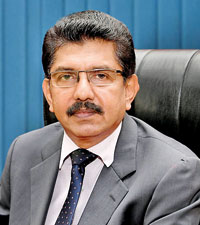News
Time-tested public health exercise helped keep COVID-19 under control in SL
There will be some relaxation of the restrictions next week, a top health official said, reiterating that COVID-19 has been brought under control and there is no community spread.

Dr. Anil Jasinghe
“We did not leave room for a community spread, though some clusters bloated the figures. We are still very watchful and vigilant over all those in quarantine centres and the villages to which some of the navy personnel went. We will act promptly if there are any infections,” the Director-General (DG) of Health Services, Dr. Anil Jasinghe told the Sunday Times.
Sandwiching the interview with the Sunday Times between several meetings on Friday evening, he said that many are questioning how Sri Lanka is having a low death rate from COVID-19, when in countries such as the United States of America (USA), the United Kingdom (UK) and Italy, the death toll has been high. In those countries, a majority of those who have died are over 60 years old.
The answer for the doubts being expressed over Sri Lanka’s experience is that keeping COVID-19 under control has been a public health exercise based on epidemiological evidence – “that is the science and includes the essential components of ‘Place’, ‘Time’ and ‘Person’,” according to the DG.
These are basics which have not changed since the 1800s, it is learnt, with ‘place’ being where the infection is; ‘time’ being when and ‘person’ being who has got infected.
“This public health exercise is taking place in public among the people and not in a laboratory. So we cannot lie about it,” said Dr. Jasinghe, pointing out that “hanganna be” and every case is important. In this exercise, contact tracing plays a crucial role. This is how clusters nivve (were put out).
Why is the death rate low in Sri Lanka?
With the hallmark of the COVID-19 control campaign being the public health exercise and other countries seeing over 60s succumbing to this viral infection, Sri Lanka too had a major challenge with its rapidly-ageing population (10.4% of the population or 2.2 million were over 65 in 2018, according to the World Bank). Aggravating the situation was the fact that there are more people suffering from diabetes in Sri Lanka than in the UK, there are those affected by hypertension and there is also a large segment affected by renal (kidney) issues.
“This is a ‘huge’ chunk of vulnerable people,” says Dr. Jasinghe, creating an image of how if the virus rampaged, kudu, kudu wenna thibba (there would have been chaos). The virus did not reach this vulnerable chunk because we literally built a wall around them, protecting them and stopping the virus from getting through. We actively carried out case detection and contact tracing. The public health alertness de-escalated the outbreak.
Testing
The DG points out that with the public health measures in place to prevent the spread of COVID-19 and also the lockdown (whereas in countries such as South Korea there was only a pseudo-lockdown) and curfew, testing was gradually increased.
Testing is being conducted on a targeted algorithm and policy and not just on a whim at every junction. Those who are tested are in the highly-vulnerable group like those in Intensive Care Units (ICUs), those having Severe Acute Respiratory Illness (SARI), those whom the clinicians want tested, those in quarantine centres and other vulnerable groups such as those living in congested areas, substance abusers, municipal workers, trishaw drivers, fish vendors etc., he said.
More than 32,000 RT-PCR tests have been done in Sri Lanka, with a daily average of about 1,500 being conducted, the Sunday Times learns.
Dr. Jasinghe adds that Sri Lanka has a positive rate of 3%, which means that of 100 tested 97 do not have the infection. This is after targeting the vulnerable groups. This low-positivity rate indicates that there is no community transmission.
| State hospitals including clinics to function as usual All the state hospitals including clinics would function as usual but with precautions such as triaging and social distancing, said Dr. Anil Jasinghe, requesting all Directors to be proactive in ensuring these measures. There would be moves to discourage patients from travelling long distances to centres such as Colombo for specialist services but to access these services from hospitals which have them, closer to their homes. A circular has also been prepared to this effect for hospitals to follow, he said. When asked how treatment for a disease like dengue would be continued at optimal level as a premier centre for its treatment, the National Institute of Infectious Diseases (NIID), is now managing COVID-19, the DG added that the Thalangama and Wethara Hospitals have been earmarked for this and would carry out dengue management with the support of NIID doctors. | |


